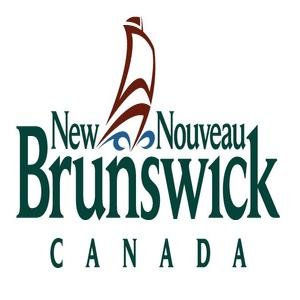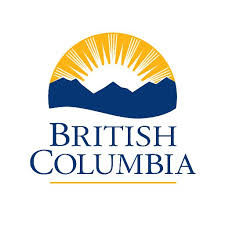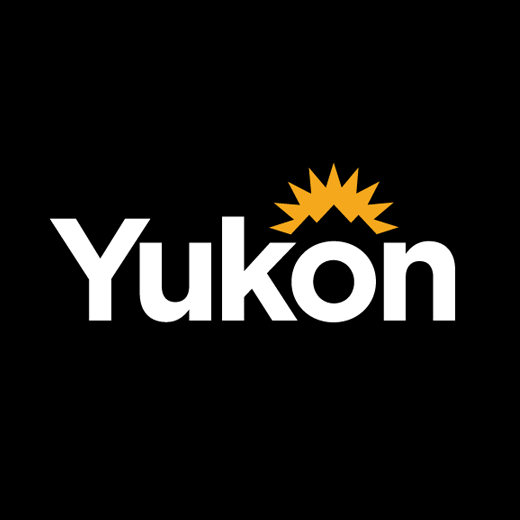reserve
Type of resources
Available actions
Topics
Keywords
Contact for the resource
Provided by
Formats
Representation types
Update frequencies
status
-

The Wildlife Refuge feature class provides the geographical boundaries (polygons) of New Brunswick's Wildlife Refuges and Wildlife Management Areas. Most of these entities were established in the mid 1900s for the management of wildlife species that were hunted, trapped or snared by providing areas where hunting, trapping or snaring could be prohibited or restricted. Some areas were included because they were recognized tourist destinations (Acadian Village and Kings Landing Wildlife Management Areas) or other areas designated for "protection". As of early 2008, hunting, trapping and snaring is not allowed in any Wildlife Refuge and some Wildlife Management Areas; while in some Wildlife Management Areas trapping and snaring are allowed but no hunting; and in other Wildlife Management Areas hunting, trapping and snaring are allowed; ie, no restrictions. Most of New Brunswick's Wildlife Refuges and Wildlife Management Areas were established in the mid-1900s for the management of wildlife species that were hunted, trapped or snared by providing areas where those activities could be prohibited or restricted. Some areas were included because they were recognized tourist destinations (Acadian Village and Kings Landing Wildlife Management Areas) or other areas designated for "protection". 1. 2. Do not confuse Wildlife Refuges and Wildlife Management Areas with Wildlife Management Zones (WMZ GIS layer).
-

Spatial representation of a reserve of retention area associated with a silvicultural system. Reserves are forest patches or individual trees retained during harvesting, or other forestry operations to provide habitat, scenic, biodiversity, and other values. The reserve types included are Riparian, Wildlife Tree Patches, and Other. This is part of the Silviculture and Land status Tracking dataset, which includes all business processes required to receive and process records from forest licensees to record report on Silviculture and Land Status Management activities.
-

~~~~~~~~~~~~Defines areas within the province of British Columbia where mineral, placer and coal titles are restricted and placer titles are permitted. This business view contains a detailed set of attributes. A reserve is established by a B.C. Regulation of the Chief Gold Commissioner under - Section 22 of the Mineral Tenure Act: Mineral reserves - Section 21 of the Coal Act: Coal land reserves and it is the legal instrument used to prevent or restrict access to mineral, placer and coal lands.
-

Historic view of areas within the province of British Columbia where mineral, placer and coal titles were once restricted and placer titles are permitted. This business view contains a detailed set of attributes.
-

Land under administration and control of Government of Yukon, disposed of by the Department of Energy, Mines and Resources (EMR), Land Management Branch. This feature class includes: Agreement for Sale: a contract between two or more parties to sell and purchase land. The contract identifies conditions and terms of the transaction. Lease: a special contract between a property owner (landlord) and a person wanting temporary enjoyment and use of the property (tenant) in exchange for rent paid to the property owner. Easement: a right of passage over a neighbour's land or waterway. Reservation (or Reserve): sets aside land for other government departments (OGD) or interested party through an OGD, to be used for a specific purpose. A reserve does not give tenure to the land and is not considered a disposition of land. Does not include applications, licences, notations or agricultural land. Distributed from [GeoYukon](https://yukon.ca/geoyukon) by the [Government of Yukon](https://yukon.ca/maps) . Discover more digital map data and interactive maps from Yukon's digital map data collection. For more information: [geomatics.help@yukon.ca](mailto:geomatics.help@yukon.ca)
-

The Yukon Geological Survey (YGS) has compiled over 195 surficial geology maps into a standardized GIS format, providing approximately 80% coverage of the territory. The maps range in scales from 1:250,000 to 1:10,000 with spatial overlap between scales. The original maps were produced by various agencies, including the Geological Survey of Canada, YGS, Yukon Government, universities, and the City of Whitehorse. All original feature descriptions have been preserved and also converted to standardized values using the Yukon terrain classification system. The compilation includes 4 GIS datasets and supporting documents available for download via [YGS integrated data system](https://data.geology.gov.yk.ca/Compilation/33) (YGSIDS) or GeoYukon. A .lyr file is [provided](https://data.geology.gov.yk.ca/Compilation/33) to symbolize feature classes and differentiate overlapping maps at different scales. Additionally, there is a surficial geology map index. The polygon attributes captured include surficial material, texture, age, surface expression, and geomorphological processes. Line features include geological contacts, glacial limits, glacial landforms (cirques, arêtes, eskers, meltwater channels, moraines), and non-glacial landforms (faults, lineaments, landslides, escarpments). Point features include field station, fossil and sample locations, glacial landforms (erratics, kames, kettles, drumlins, flutings), permafrost features (pingos, palsas, patterned ground, thermokarst depressions), and other non-glacial landforms (landslides, tors). The map index provides information on each map publication such as author, map title, map scale, publisher. These data are valuable for land-use applications in the territory, including: mineral and placer exploration, geotechnical engineering, infrastructure planning, granular resource assessments, permafrost modeling, agricultural assessments, forest management, and biophysical or ecological land classification. Distributed from [GeoYukon](https://yukon.ca/geoyukon) by the [Government of Yukon](https://yukon.ca/maps) . Discover more digital map data and interactive maps from Yukon's digital map data collection. For more information: [geomatics.help@yukon.ca](mailto:geomatics.help@yukon.ca)
-

Land under administration and control of Government of Yukon, Department of Energy, Mines and Resources (EMR), Agriculture Branch. Includes active applications for agricultural land including: (1) Agreement for Sale: A contract between two or more parties to sell and purchase land. The contract identifies conditions and terms of the transaction. (2) Lease: A special contract between a property owner (landlord) and a person wanting temporary enjoyment and use of the property (tenant) in exchange for rent paid to the property owner. Distributed from [GeoYukon](https://yukon.ca/geoyukon) by the [Government of Yukon](https://yukon.ca/maps) . Discover more digital map data and interactive maps from Yukon's digital map data collection. For more information: [geomatics.help@yukon.ca](mailto:geomatics.help@yukon.ca)
-

Land under administration and control of Government of Yukon, Department of Energy, Mines and Resources (EMR), Agriculture Branch. Includes all dispositions of agricultural land: Agreement for Sale: A contract between two or more parties to sell and purchase land. The contract identifies conditions and terms of the transaction. Lease: A special contract between a property owner (landlord) and a person wanting temporary enjoyment and use of the property (tenant) in exchange for rent paid to the property owner. Reservation (or Reserve): Usually sets aside land for the purpose of agricultural land planning. A reservation does not give tenure to the land and is not considered a disposition of land. Distributed from [GeoYukon](https://yukon.ca/geoyukon) by the [Government of Yukon](https://yukon.ca/maps) . Discover more digital map data and interactive maps from Yukon's digital map data collection. For more information: [geomatics.help@yukon.ca](mailto:geomatics.help@yukon.ca)
-
The USGS Governmental Unit Boundaries service from The National Map (TNM) represents major civil areas for the Nation, including States or Territories, counties (or equivalents), Federal and Native American areas, congressional districts, minor civil divisions, incorporated places (such as cities and towns), and unincorporated places. Boundaries data are useful for understanding the extent of jurisdictional or administrative areas for a wide range of applications, including mapping or managing resources, and responding to natural disasters. Boundaries data also include extents of forest, grassland, park, wilderness, wildlife, and other reserve areas useful for recreational activities, such as hiking and backpacking. Boundaries data are acquired from a variety of government sources. The data represents the source data with minimal editing or review by USGS. Please refer to the feature-level metadata for information on the data source. The National Map boundaries data is commonly combined with other data themes, such as elevation, hydrography, structures, and transportation, to produce general reference base maps. The National Map viewer allows free downloads of public domain boundaries data in either Esri File Geodatabase or Shapefile formats. For additional information on the boundaries data model, go to http://nationalmap.gov/boundaries.html.
 Arctic SDI catalogue
Arctic SDI catalogue